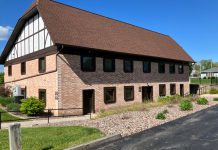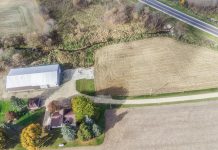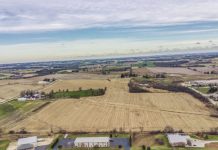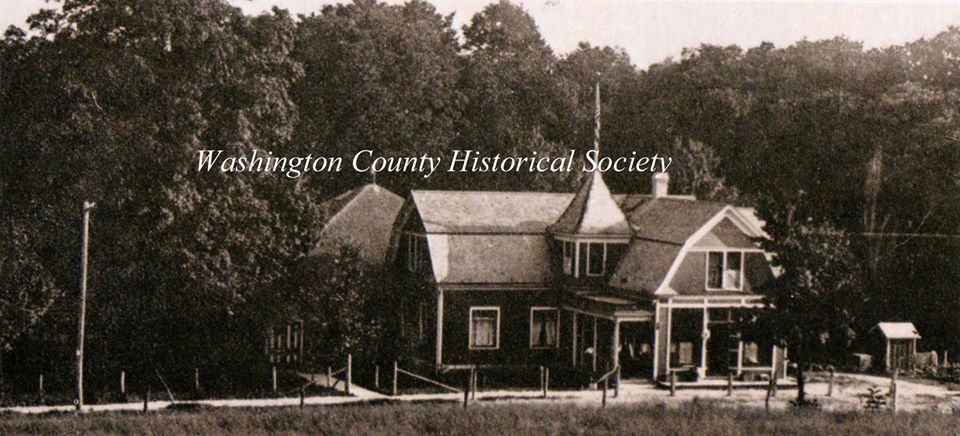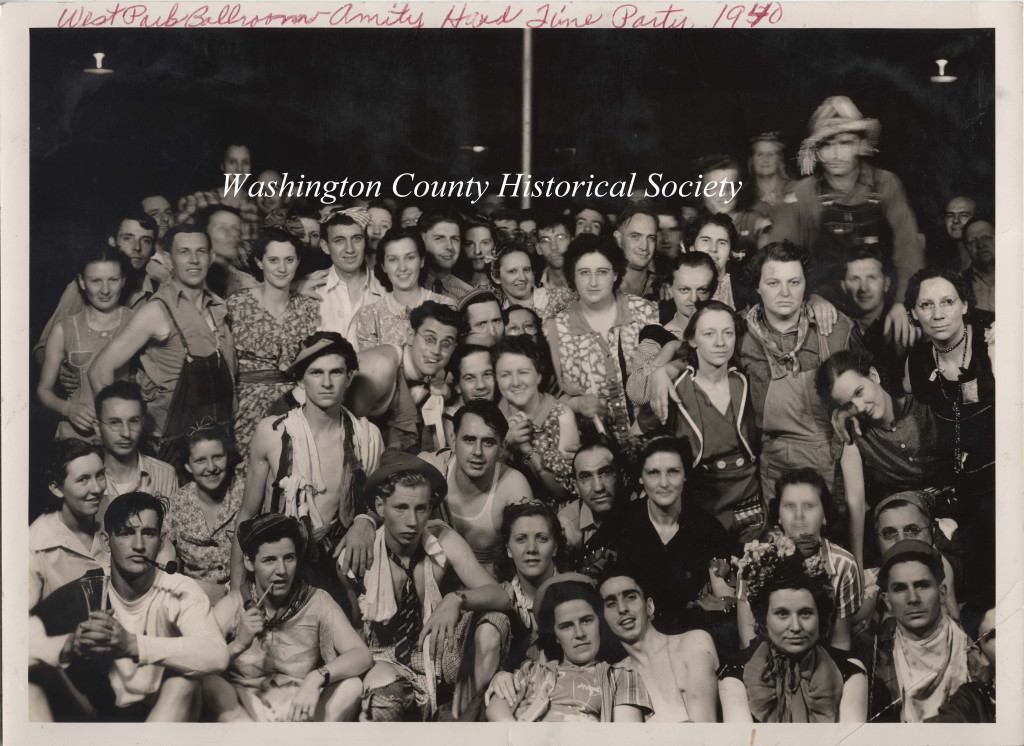West Bend, WI – From 1910 to 1971 the West Park Ballroom was famous for dances, weddings and a popular white elephant sale. “My parents, Sylvester and Elizabeth (Betty) Jacak, bought the business in 1956,” said Diane Jacak Liegl.
“I was four years old, and my dad was a farmer in St. Kilian and he had a heart attack and had to get off the farm, so my parents bought the dance hall.”
Click HERE to SUBSCRIBE to FREE local news at
Washington County Insider on YouTube
Liegl, 61, said the business was closed at the time, almost condemned after the owner, Lester Sonnenberg, let it go into disarray.
The Jacak’s moved in to 1113 Cherry Street and started fixing things up; Liegl remembered it was a big job.
“My dad got a 50-pound bag of rat poison and my mom was putting supper on the table and he decided to just set that in the basement until after he ate and when he went back down the rat poison was gone already.
“They shoveled gallon pails of rats out of that building,” she said.
The Jacak’s also remodeled the kitchen located off the tavern. “I had a dollhouse in there that was built by Phillip Heinecke and the workers put some rags on it and the roof burned off my dollhouse,” said Liegl. “The people from the bar came and those idiots were throwing beer and alcohol on it and they were making it worse.”
A year after the Jacak’s bought the tavern, construction started to widen the road in front of the business which eventually became W. Washington Street.
According to locals West Park Ballroom was extremely loud and popular. Max Sommerfeld, 61, said “it was one of the few places in town that could accommodate a sizable crowd as the Ballroom was a big square building with a hardwood floor.”
Herman Tanker grew up a block from the West Park Ballroom on Cedar Street. “That tavern was right on the sidewalk and there was a huge gravel parking lot where you would come off, what’s now Y Drive,” he said.
“The music from the Ballroom went until midnight and it was always loud and in summer we had to keep the windows closed because we couldn’t sleep. Eventually we got air conditioning just to keep the music at bay,” said Tanker.
Rusty and Doris Schladweiler owned the Ballroom in the 1960s. Tanker remembered the family lived on the second floor of the business and the couple had eight daughters.
He also said there was always adventure to be had in ‘The Woods’ or ‘Cemetery Hill’ located behind the Ballroom. The cemetery was on Hickory, across from the old Bill O’Meara house, and it came up where the back side of the Y is now.
“There was a big hill that went into the hollow and we’d ride cardboard down Cemetery Hill,” Tanker said. “Sometimes you didn’t even have to take your own cardboard because there was always some lying in the field.”
The neighbors on the block were the Flasch boys. Tanker remembered how they cut a track through the woods so they could ride bikes or mopeds. “They pretty much felt that was theirs. They even had tree forts and if they’d come out and you were in it – it was like a turf war,” he said.
Records in the Research Center at the WCHS show West Park was originally known as Schuetzenverein or Schutzen Park or Shooting Park. It was the first private park to open in the city of West Bend in 1868.
Schuetzenverein’s, or shooting clubs, were popular in communities with strong German heritage providing a place to practice shooting and hold celebrations.
William Kirchner, 96, of West Bend often heard the story of two brothers that would go to the tavern quite regular on a Saturday morning. “I never seen it but often heard that one would stand and hold a quarter between a thumb and an index finger and the other would stand about 50 feet away with a rifle and shoot that quarter out,” said Kirchner qualifying the brothers as “regular drunkards in the tavern.”
In 1876 the park was purchased by Charles Hoppe and his sister, Mrs. Charles (Sophie) Richter. The complex, a popular gathering place for Civil War veterans, consisted of a dance hall, dining hall, a bandstand and an outdoor bowling alley. In Dec. 13, 1911, John Lohr purchased a half interest in the Shooting Park and by July 1912 the name was changed to West Park and was sold to Bruno Jacob of Milwaukee.
In 1920 there was a decline in similar facilities across the country after Congress passed the 18th Amendment, prohibiting the sale of alcohol. The consumption went hand in hand with shooting activities at the park.
Kirchner said the tavern stayed open during prohibition and “served near beer and soda.”
“Some taverns served alcohol on the side,” he said. “A lot of times the tavern owners had a half pint in their hip pocket and they’d go into another room to drink it or they’d pour it to you on the sly.”
Between 1920 and 1940 advertisements for the West Park Ballroom focused on “an amusement resort of the kind” and touted private or public dances, music for 25-cent admission to see Eddie Becker and his Blue Mound Melodians.
In 1936 roller skating was the big draw; a local ad read: ‘For health’s sake Roller Skate come for a good time.’ In 1937 the Polka Dot Fireworks Stand set up at West Park and featured the “most complete line of fireworks,” Sparklers, 3 boxes 10 cents and Firecrackers, 1-cent per package.
On August 20, 1971 a disastrous fire ravaged the Ballroom which was owned at the time by Rusty and Doris Schladweiler.
“My parents still held the mortgage on the place when that fire occurred,” said Liegl. “The fire started in the downstairs kitchen and there was a fan in the wall behind the stove that sucked the vapors up and there was a grease fire and they thought they had it out but the fan pulled it in and it started burning in the walls.
“We called a neighbor and he said it was bad and the fire was coming out the roof.”
The West Park Ballroom was razed in September and the location was purchased shortly thereafter by the YMCA.
Photo of Schutzen Park with a hat tip to Terry Becker.
Second photo was an Amity Leather ‘hard times’ party held at West Park Ballroom in 1940. The photo is courtesy the Washington County Historical Society.


